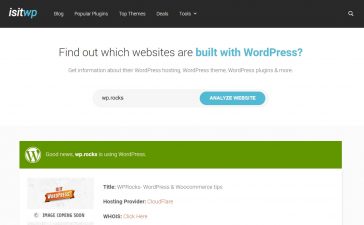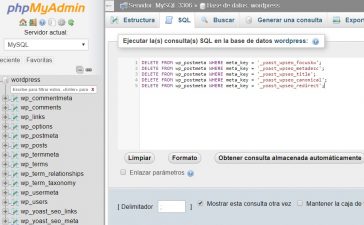If you are a WordPress user, you should probably have changed the Theme sometime. The best part is that it is very easy to change your WordPress theme. If you have not done it but you want to evaluate if you need a change, take note of these tips so you do not lose information and everything goes super well.
1. Take note of your current theme
Many WordPress users look for solutions on the web and find that snippets added manually to their theme (like functions.php files) can supply the needs. The detail is that it is very common to forget that these changes were made.
Enter your theme files and write down all the additional code that you have added. You must also check the loading time of the current theme to be able to compare. enter a site like Pingdom Tools or use the YSlow test to test the different pages of your website, not just the homepage.
2. Remember the sidebar
You must make sure that your new theme is ready for widgets. Sidebar widgets are easy to use and customize, in fact it is one of the most personalized areas of WordPress-based websites. Therefore, all changes in terms of texts, images, links, advertising and others will be lost if you make a change to a theme that is not ready for the widget. Also, everything you modify in the sidebar.php file will be overwritten, so take that into account.
3. Don’t lose your web analytics data
Many WordPress users use Google Analytics and other services to collect data. Many of them don’t use plugins to add the tracking codes but modify the codes of the file footer.php. Some of the topics have a place to place the AdSense code. Whatever your case, be sure to copy and paste the tracking code to your new topic. As it is such a simple detail, many people often forget it.
4. Don’t forget the RSS feeds
Many of us use FeedBurner for WordPress Feeds. Many themes allow the integration of this tool from its configuration panel. It is important to keep your feed directed to FeedBurner when you change the subject, otherwise there will be two RSS feeds for your blog and subscribers may be using the duplicate feed. It doesn’t mean that you will lose the subscribers, but that you will not see them all in the main blog.
5. Create a backup
For everything, always, we must create a backup. This precaution will allow you not to lose subject files, plugins and databases. Although we like to think positive, we are never exempt from something going wrong. You can use BackupBuddy to create a full backup of the entire website.
6. “In maintenance”
You probably don’t want users to see the process of remodeling your website. It is better to place the web in maintenance mode for a few minutes while the change occurs and you can make sure that everything is working in order. Once you’re sure, activate the theme.
7. Test all functions
Once you have activated the theme, start testing all the features and plugins. Remember the notes you took before and go point by point to make sure everything works and everything is added correctly. Review details such as comments, pages, posts, searches, file page, contact forms, etc.
About the plugins, make sure that the format is maintained. Many plugins use the style of the theme to be displayed, so in terms of appearance, it is a point that needs to be reviewed.
8. Compatibility in all browsers
Test your page in all browsers to which you have access. Browsers tend to render things in a different way, especially Internet Explorer. Make sure that your website looks good in most browsers, that items do not have errors when loading, etc.
9. Make third-party applications look good
If you use Google AdSense or another form of ads that allows personalization, take advantage of this possibility. For example, if the color of your previous website was green and the AdSense links looked that color, when you change the theme, make sure it matches the new appearance.
The same goes for widgets, facebook buttons to give like, etc.
10. Let your users know!
When you turn off maintenance mode, write a concise post to tell users about this change. Stay tuned to what users comment on opinions, suggestions and especially if they report failures in any element of your website.
Ask your audience via Social Networks to enter the web and leave your comments, tell you if it looks good in your browser, etc. If a failure is reported, ask for more details as screenshots and try to solve the problem. If you can not, go to developer communities. Some will charge fees, naturally, for the advice provided.
Tip: You can take advantage of the occasion to elaborate content from what you learned generating the change!
11. Clean your plugins
The themes, currently, have many preloaded functions. For example, topics such as Genesis and Thesis have functions related to SEO. However, it is better to install the Yoast or the WordPress plugin. Choose what you need, what would work best for the objectives of your project, and what you do not need, deactivate it.
12. Don’t rush making the change
When you change the subject, the best recommendation is that every change you make is that you are very careful. Do it calmly, change small elements and try them little by little until they work well. When you feel good with small changes, move on to drastic changes. It is important that you learn about the structure of the new topic before making these big changes.
13. Test the loading time, again
We already suggest you take note of the load time of your previous theme, now test the time of the new theme and compare. Review the details that can help you improve this detail and make decisions.
14. Monitor the bounce rate
After making the change of topics, take note of the percentage or rebound index. Some topics are friendlier than others in terms of navigation. If your bounce rate has increased with respect to the previous topic, you can take measures such as adding widgets from related or popular posts, improving call-to-action, etc.
15. Everything can improve, always
When you launch something new on the web, especially a big change like the theme, users will always have opinions and suggestions. They may love some detail or they may not like it at all. Stay in touch with your audience, conduct surveys, make them participants in the changes and show them that you heard them. Everything can be improved, always, with good spirit and desire.
















